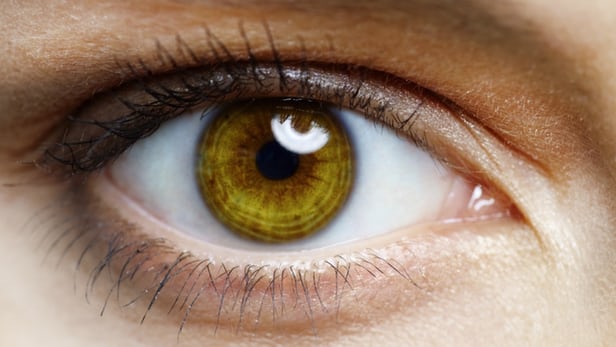
In research that could significantly improve the viability of human retinal cell transplant methods and help restore eyesight in patients with diseases such as macular degeneration, a team at Japan's RIKEN Center for Developmental Biology (CDB) has used a genetic matching technique to overcome the problems of rejection and the use of immunosuppressant drugs when transplanting retinal pigment cells derived from the stem cells of one monkey into the eyes of other monkeys.
Whilst a great deal of promise is shown in the reprogramming of adult human cells into stem cells which can then be used to grow into any number of new and different cells, rejection of cells not taken from the original recipient means that immune-suppressing drugs or a lot of expensive, time-consuming cell matching and manipulation techniques are required.
To avoid tissue rejection problems after implantation, it's possible to grow retinal pigment cells from induced pluripotent stem cells (iPSCs) created using the patient's own skin cells. However, producing iPSCs in this way is both costly and very slow as the cells grow at the same rate as they do normally in the body, which means a patient can face a wait of a year or more before the cells are ready for transplantation.
"In order to make iPSC transplantation a practical reality, the current goal is to create banks of iPSC-derived tissues that can be transplanted into anyone as they are needed," said Dr. Sunao Sugita of RIKEN. "However, immune responses and tissue rejection are big issues to overcome when transplanting tissue derived from other individuals."
The new RIKEN research uses a technique known as Major histocompatibility complex (MHC) matching. MHCs are a collection of proteins found on the surface of a cell that play a particular role in cell recognition in the immune system. Also known as human leukocyte antigens (HLAs) in people, genetic variations of these proteins mean that often only the MHCs particular to the original cells will be recognized by the T cells of the host immune system, meaning that any other transplanted cells with different MHCs will be rejected.
To test their assumptions on MHC matching, the RIKEN team employed matched retinal pigment cells cultivated from monkey iPSCs in the Kyoto University iPS Cell Research and Application cell bank. These cells were transplanted into the subretinal space (generally between the retina and the retinal pigment epithelium) of monkeys that were either matched or not matched genetically with the MHCs present.
In the MHC-matched monkeys, the team found that the transplanted cells remained viable and without rejection for at least six months, and without the need of immunosuppressant drugs. Further examination in the laboratory of the MHC-matched cells showed that immune system T cells recognized the iPSC-derived retinal pigment cells and did not reject them. In the MHC-mismatched monkeys, examination revealed only inflammatory cells and a subsequent failure of the transplanted grafts.
It is this stability of tenure in situ without the need for immunosuppressants that makes the RIKEN research such an important step toward curing age-related blindness caused by macular degeneration. Other methods, such as optogenetic therapy also show promise in this area, but they can be slow and difficult; a bank of MHC-matched IPSCs readily available to be transplanted, on the other hand, would be a boon to a greater percentage of the population.
The RIKEN researchers have also observed similar results in concurrently run research where they replicated the laboratory (in vitro) experiments with HLA-matched or unmatched retinal pigment cells and human T cells, and they have already begun a clinical transplant trial involving patients with age-related macular degeneration.
"Now that we have established the lack of immune response in monkeys and in human cells in vitro, using the iPS cell bank appears to be a viable solution, at least in the case of retinal pigment epithelial cell transplantation," said Dr Sugita. "In the next clinical trial we plan to use allogeneic iPS-retinal pigment epithelial cells from HLA homozygote donors. The clinical data after the transplantation will allow us to see if the iPS cell bank is truly useful or not. If so, I think this type of transplantation can become standard treatment within five years."

 Previous page
Previous page Back to top
Back to top







